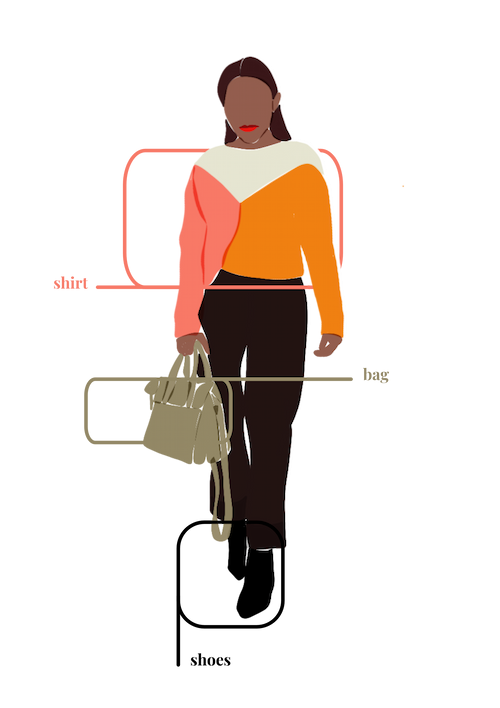- Clothes
- Bags
- Accessories
-
Inspiration
- Shoes
The Devil Wears… Ultra Fast Fashion. Do You?

Just when we thought that fast fashion’s disposable approach to clothing couldn’t get any worse, we discovered the sinful evils of ultra fast fashion.
Spoiler alert: it’s ultra bad.
Ultra fast fashion in context
Let’s see how ultra fast fashion is different from its only-slightly-slower cousin.
What is fast fashion?
Fast fashion creates trendy clothes sold at unsustainably cheap prices and treated as disposable.
Some examples are Zara, H&M, and Primark.
Rather than taking the environment and garment workers into account, most fast fashion brands focus on keeping their prices low and production fast.
As a result, people only wear their clothes an average of 7 times before disposing of them!
Find out more about the problems with fast fashion.

What is ultra fast fashion?
Ultra fast fashion is basically fast fashion on steroids and with a digital focus!
It produces new clothes and collections even quicker and at lower prices, only sells online, and relies on social media and algorithms more heavily.
Some ultra fast fashion brands you’ve probably heard of are SHEIN, Asos, Fashion Nova, PrettyLittleThing, and Boohoo.
So, what is the difference between fast and ultra fast fashion?
The main differences are that ultra fast fashion brands only sell their collections online and are much faster than ‘traditional’ fast fashion stores in every single way, from clothing production to trendsetting and… how quickly clothes end up in landfills.
For example, a couple of decades ago, fast fashion companies like Zara shook the world by offering dozens or hundreds of new garments every week.
Now? Ultra fast fashion brands brought that number to… thousands!
Why is ultra fast fashion so popular?

Ultra fast fashion brands have grown in popularity by harnessing social media, and especially TikTok and its primarily Gen Z audience:
- Collaborating with influencers and celebrities to make these clothes seem irresistible
- Harnessing social media algorithms to gather data and shape consumer habits
- Creating #FOMO with collections that expire within days
- Encouraging #hauls
- Shifting the focus from the already detrimental fast fashion concept of shopping for entertainment to shopping for content
- Promptly creating knockoffs of celebrity outfits
- Not taking a hit during the pandemic, unlike fast fashion stores with physical locations
The ultra bad consequences of ultra fast fashion
- A terrible environmental impact, from polluting synthetic materials to huge quantities of waste
- Most ultra fast fashion brands aren’t transparent about their production: many rely on sweatshops where workers can even be forced to withstand 75 hours a week
- They use social media algorithms to manipulate young people’s shopping habits, often affecting their mental health: users are pushed to buy clothes to deal with an insecurity, whether that’s not having enough or not belonging to a tribe… and God forbid that someone is seeing repeating their #OutfitOfTheDay!
How to resist ultra fast fashion
- Unfollow brands or influencers promoting these unsustainable hauls, and replace them with ethical content creators
- Think of clothes as durable rather than disposable (quality over quantity!). Before buying them, ask yourself: do I actually need this? Will I wear it at least 30 times? How and by whom was it made?
- Buy second-hand and from ethical brands: you can shop sustainable collections from hundreds of them on Project Cece!
- Subscribe to our newsletter to receive fairtrade brand recommendations and tips on how to adopt a more sustainable approach to fashion
As well as making a huge difference for the planet and garment workers, abandoning ultra fast fashion will allow you to be happier with a smaller collection of higher-quality clothes.
No more purchasing them for a quick dopamine release without worrying about consequences, yeah?
Share our story
Related articles
How to Ditch Fast Fashion & Switch to Ethical Clothes: 10 Tips
Ready to take the first step towards a more sustainable wardrobe? Here are some practical tips to ditch fast fashion and discover ethical alternatives.
Problems with Fast Fashion: Cheap Clothes, High Hidden Costs
From child labour to toxic dyes, there’s a high hidden cost behind cheap labels. Check out the problems with fast fashion and discover a sustainable solution.
7 Eye-Opening Fast Fashion Documentaries
Looking for an interesting, educational watch? Discover the true cost behind a £2 t-shirt with the best fast fashion documentaries. Spoiler alert: it’s very high.
Project Cece is a platform that collects ethical fashion from vetted brands and shops in one place. Browse ethical fashion for women and men and find items that fit your style, budget and values!




